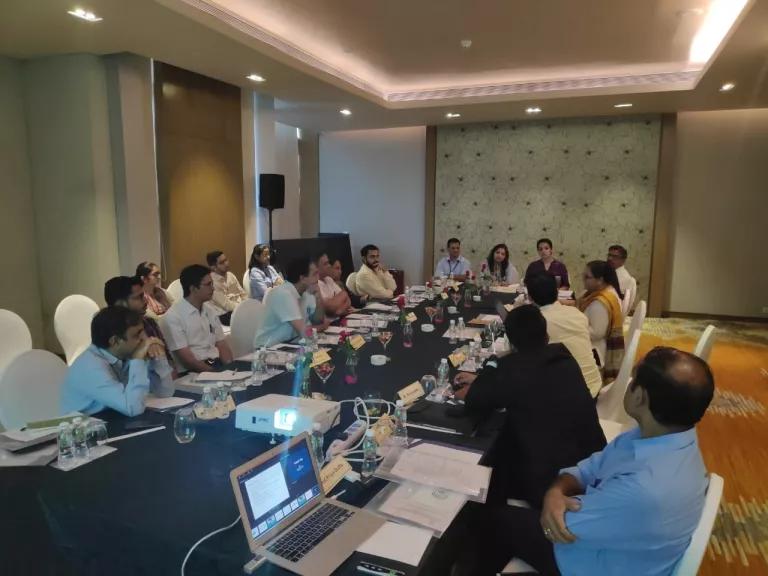
Guest Blog by Charu Lata
Communities across India are inundated by dangerous air pollution levels. Dangerous levels of air pollution has led to more than 500,000 premature deaths in India, according to the recent Lancet Countdown 2019 on health and climate change report. A key solution to improving India’s air quality is to accelerate the transition to electric mobility. Two key states, Gujarat and Telangana are moving forward with finalized policies and engaging with stakeholders.
At the national level, the Indian government introduced two main programs, the National Electric Mobility Mission Plan (NEMMP) 2020 and the Faster Adoption and Manufacturing of Electric Vehicles (FAME I and FAME II). At the state level, seven states are moving forward with Electric Vehicle (EV) policies and 10 more are in the pipeline.
In Gujarat and Telangana, the draft EV policies are in the process of consultations with government departments, industry and stakeholders. Stakeholders in the states are also working to find a path forward to improve deployment of charging infrastructure to support acceleration of e-mobility. For example, Hyderabad is working with Energy Efficiency Services Limited (EESL) to set up public charging at 50 locations in the city. NRDC and local partners are working with two key states, Gujarat and Telangana as knowledge partners on the draft EV policies as well as conducting stakeholder consultations.
As part of an ongoing partnership, NRDC along with Gujarat Energy Research and Management Institute (GERMI) and Administrative Staff College of India (ASCI) recently brought together key stakeholders. The group included government officials, EV industry, academia and civil society at roundtables in Ahmedabad and Hyderabad. The roundtable discussions focused on the key barriers, challenges and solutions to support effective development and deployment of charging infrastructure to enable faster and wider uptake of EVs in the state.
During the discussions, stakeholders highlighted that the FAME II scheme by the national government set a framework and direction, but more work needs to be done at the state level. State level policies need to go beyond the basic structure of FAME II. State EV policies should be holistic documents also addressing areas such as component and battery recycling ecosystem, skill development and R&D and innovation in new and improved technologies, according to stakeholders.

The discussions had an in-depth discussion on charging infrastructure. Public charging infrastructure is essential for the growth of electric vehicles to enable market growth and alleviate range anxiety related to EVs. Several charging infrastructure companies and key stakeholders working in Hyderabad and Ahmedabad attended the roundtable and shared key challenges.
Five key takeaways from the discussion are as summarized below:
- Long and strenuous approval process – Some approvals take as long as two months and the companies need to coordinate with numerous departments for different approvals from state government for charging locations.
- High grid upgrade cost – The charges for a new grid setup (that requires a new transformer, cabling and pole) match or sometimes exceed the cost of the charging equipment, increasing the upfront cost drastically and reducing the viability of the business model. This is especially true for setting up fast chargers.
- High time and money charged by utilities – Most charging infrastructure companies prefer private Grade A contractors for grid connection and upgrade over state distribution companies as the contractors charge less and finish the work quickly.
- Availing the preferred EV charging tariff decided by the state – Low awareness about the tariff within the utility, poor coordination between different departments of the utility and anomalies in the online application system limit charging companies from utilizing the preferred EV tariffs introduced by the states.
- Ratio of electric vehicles to charging points - A healthy ratio between the number of EVs to charging points is important to encourage early EV adopters and to relieve EV drivers of range anxiety. The correct siting of public charging stations is very important to maintain high utilization. Factors like traffic volume, grid capacity, easy access and egress, wide availability of the site form some of the important criteria in siting an EV charging station.
EV Roundtable in Hyderabad, Telangana in Oct 2019 (Credit: NRDC)
The state nodal agencies for charging infrastructure in Gujarat and Telangana highlighted that coordination between government agencies, such as the transport departments, distribution companies and municipal administration department is vital to deploying chargers. TSREDCO, Telangana’s state nodal agency for charging infrastructure, offered to collate and find solutions to key questions by charging infrastructure companies working in Telangana.
TSREDCO also informed the stakeholders that they are looking forward to developing a single window clearance system for getting approvals related to setting up EV charging stations in the state. They also informed that the Department of Heavy Industry, MoHIPE is planning to develop a common charging infrastructure software for all the states in India for smoothening issues around interoperability of charging infrastructure. This software would be used for locating EV chargers, booking slots and making payments.
Electric-mobility is an important opportunity to reduce pollution and address climate change. Engaging a wide-range of stakeholders, such as the recent Hyderabad meeting, is essential to growing a successful EV market in India.
Charu Lata leads NRDC’s EV work based as a consultant in New Delhi.